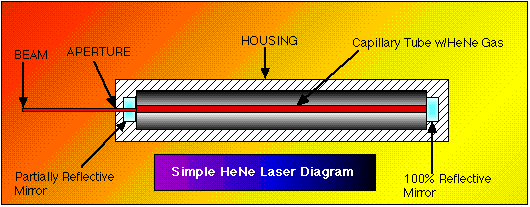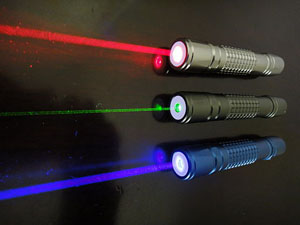 |
| Image by kind permission of Frank de Freitas, www.holoworld.com |
Lasers are essentially very simple tools - particularly the lasers that are used to create most holograms. The most common type is a gas laser. This is a very thin glass tube, about the size of a drinking straw, typically filled with helium and neon. The resulting laser is consequently known as a helium-neon laser. When the laser is powered up, the gas glows in a manner similar to a neon sign.
A beam of light is extracted from the tube by placing mirrors at both ends. Light then bounces back and forth between the two mirrors. One of the mirrors reflects all of the light that strikes it, but the other mirror allows some light to pass through. The light that passes through in this way becomes a laser beam.
 |
| By Netweb01 (Own work) [CC-BY-SA-3.0 (http://creativecommons.org/licenses/by-sa/3.0) or GFDL (http://www.gnu.org/copyleft/fdl.html)], via Wikimedia Commons |
Lasers are currently needed to create holograms because only they can provide the special light required. But they are not required to view most holograms. Holograms that can be viewed without the use of a laser are known as white light holograms.
A recent development is to use a standard laser pointing device, of the type sold in photography stores, to create holograms. This approach is opening up holography to many more people. Students in elementary schools are now making three-dimensional holograms in their classrooms, and others have a basic holography set-up at home.






